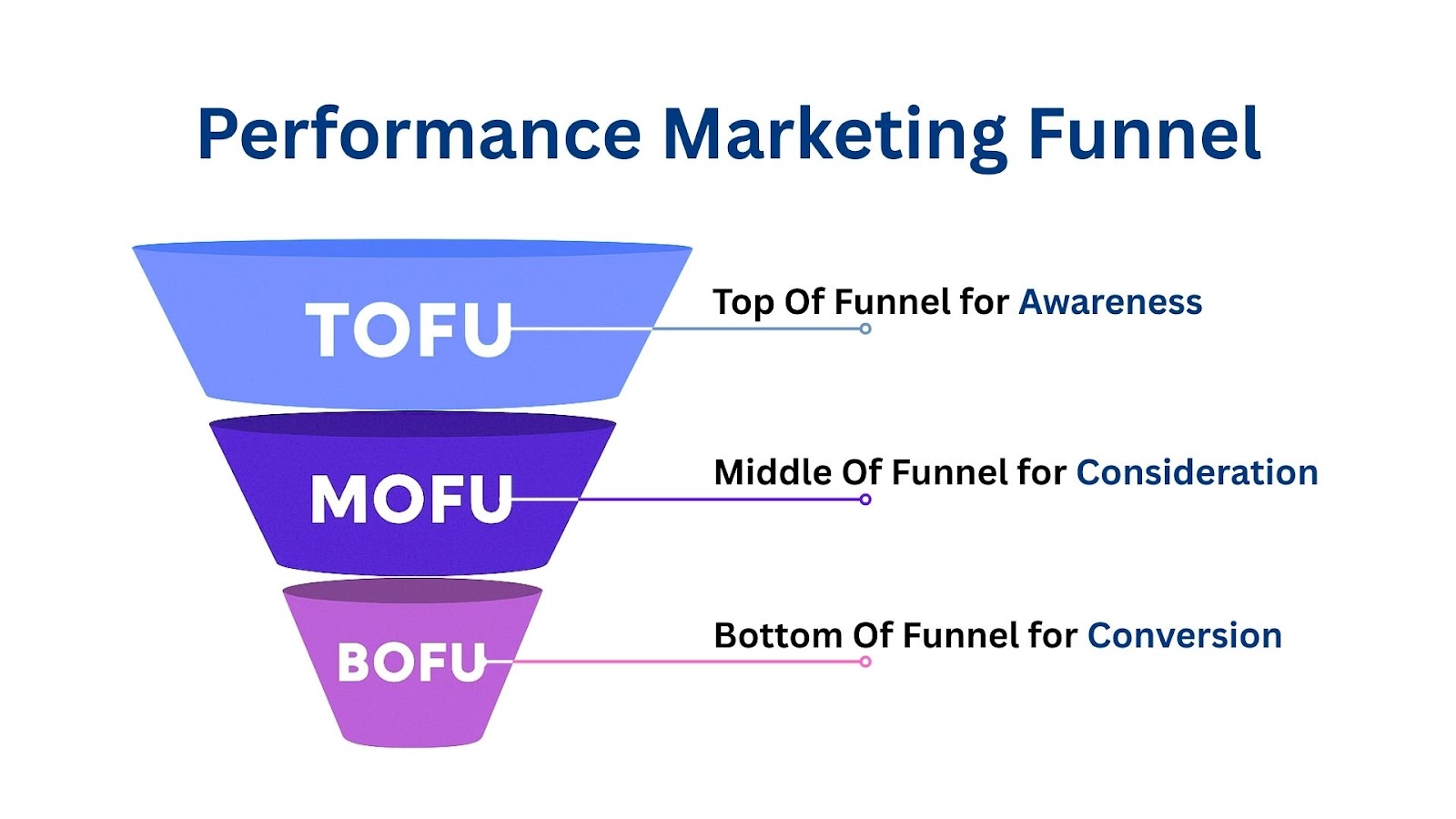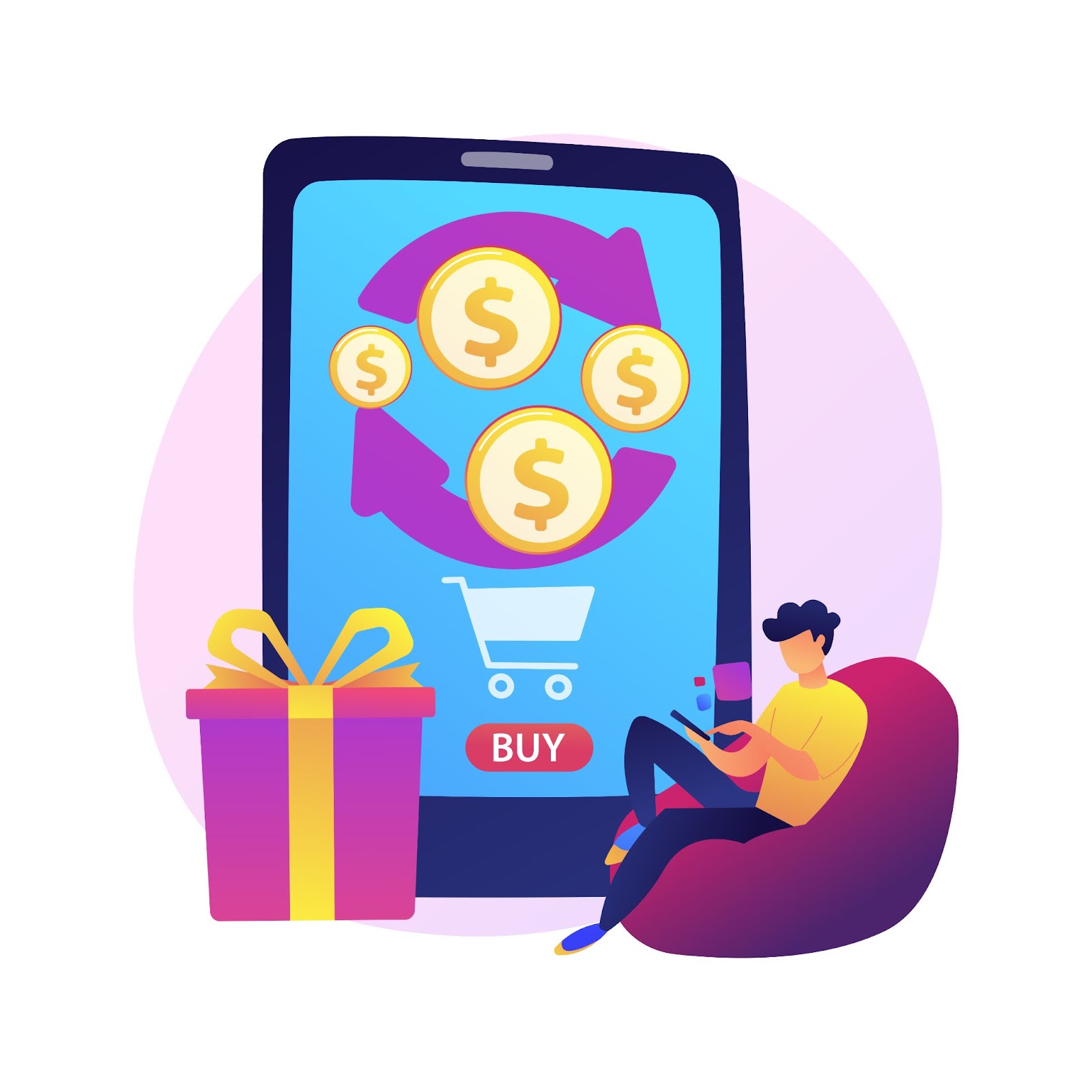Ever wonder why some brands seem to turn clicks into customers effortlessly, while others struggle to get results? The secret often lies in having a performance marketing funnel that works from start to finish. A well-structured funnel guides your audience from awareness to conversion, using targeted campaigns, data-driven insights, and clear calls-to-action.
According to HubSpot’s 2025 State of Marketing Report, over 30.55% of marketers say that leveraging data is the key to determining their most effective strategies, a core element of building a successful funnel. The challenge is knowing how to design one that attracts, nurtures, and converts without wasting ad spend. In this guide, we’ll break down exactly how to build a performance marketing funnel that works, so you can optimize each stage for maximum impact. Ready to turn your marketing into a predictable, revenue-generating machine? Let’s get started.
What is a Performance Marketing Funnel?
A Performance Marketing Funnel is a structured process that moves potential customers from first contact to purchase and beyond. It’s divided into Top of Funnel (TOFU) for awareness, Middle of Funnel (MOFU) for nurturing, and Bottom of Funnel (BOFU) for conversion. By understanding how each stage works and what your audience needs at every point, you can craft targeted campaigns that move prospects seamlessly toward becoming loyal customers.

Example:
Imagine you run an online fitness brand. At the TOFU stage, you publish blog posts and social media videos about home workouts to attract attention. In MOFU, you offer a free meal plan download in exchange for an email address, then send workout tips and client success stories. At BOFU, you run retargeting ads with a limited-time discount on your premium training program, converting interested leads into paying customers.
Strategies & Practices:
- Map Your Funnel Stages – Clearly define each stage, including what content, channels, and actions belong to it.
- Align Content With Intent – Ensure TOF content educates, MOF content nurtures, and BOF content converts.
- Define Clear Conversion Goals – Each stage should have measurable outcomes (e.g., newsletter signup, demo request, purchase).
- Assign KPIs for Each Stage – Track metrics like impressions for TOF, engagement rate for MOF, and ROAS for BOF.
Benefits:
- Creates a clear customer journey for better planning.
- Ensures content relevance at every stage.
- Improves conversion rates by aligning strategy with intent.
- Makes performance tracking easier and more accurate.
How to Build a Performance Marketing Funnel That Works in 6 Steps
1. Research and Segment Your Audience
If you want your marketing funnel to deliver real results, you need a clear picture of who you’re speaking to. Guesswork won’t get you far. Start by looking at the data, who’s visiting your site, interacting with your content, and making purchases.
Break this audience into segments based on behavior, demographics, and interests so your messages feel relevant to each group. The better you understand your audience, the easier it becomes to create targeted campaigns that resonate and guide them smoothly through your Performance Marketing Funnel.
Strategies & Practices:
- Use Analytics Tools – Platforms like Google Analytics, Meta Ads Manager, and Hotjar can reveal demographic and behavioral patterns.
- Create Buyer Personas – Define profiles based on age, gender, profession, goals, and pain points.
- Segment by Engagement Level – Group users as cold (new visitors), warm (repeat visitors), and hot (ready-to-buy leads).
- Leverage First-Party Data – Use customer purchase history, email engagement, and on-site behavior to refine targeting.
Benefits
- Reduces wasted ad spend by targeting only relevant audiences.
- Improves message personalization for higher engagement.
- Helps identify high-value customer groups.
- Increases ad efficiency and ROI.
2. Building Awareness at the Top of the Funnel (TOFU)
At the top of the funnel, your job isn’t to sell, it’s to get noticed. This is where you introduce your brand to people who may not even know they need you yet. A strong performance marketing funnel starts here, with eye-catching ads, engaging social media posts, and helpful content that sparks curiosity.
Focus on solving small problems, answering common questions, or sharing something worth talking about. The goal is simple: make a strong first impression so your audience remembers you when they’re ready to take the next step.
Strategies & Practices:
- Run Targeted Social Ads – Use Meta, TikTok, or LinkedIn ads to reach audiences based on interests and demographics.
- SEO-Optimized Content Marketing – Publish blogs, guides, and videos that answer search queries in your niche.
- Collaborate With Influencers – Partner with industry voices who already have your target audience’s trust.
- Offer Free Resources – Ebooks, checklists, or webinars that solve a small but relevant problem.

Benefits:
- Expands brand reach to new audiences.
- Builds trust early in the buyer journey.
- Positions your brand as an industry authority.
- Creates warm audiences for future retargeting.
3. Nurturing Leads in the Middle of the Funnel (MOFU)
Once someone knows who you are, it’s time to build trust and keep the conversation going. In a well-designed performance marketing funnel, this stage is where you show prospects why you’re worth choosing over the competition. Share valuable content, success stories, and answers to their concerns.
Use email campaigns, retargeting ads, and personalized follow-ups to stay on their radar. Your goal here isn’t to rush the sale; it’s to guide them closer to a decision by proving you understand their needs and can deliver real value. This stage is often supported by tools and performance marketing services that assist with segmentation and campaign delivery in the background. These efforts ensure the messaging stays consistent and aligned with the lead’s intent as they move closer to conversion.
Strategies & Practices:
- Automated Email Nurture Sequences – Deliver relevant content over time to keep your brand top-of-mind.
- Remarketing Campaigns – Target people who visited your site or engaged with your TOF content.
- Provide Social Proof – Use testimonials, reviews, and case studies to increase credibility.
- Offer Interactive Content – Quizzes, calculators, or assessments to engage users and capture more data.

Benefits:
- Strengthens trust and credibility.
- Keeps leads engaged over time.
- Address objections before purchase.
- Improves conversion readiness.
4. Driving Conversions at the Bottom of the Funnel (BOFU)
At the bottom of the funnel, your audience is almost ready to buy; they just need that final push. This is where you remove any friction and make saying “yes” the easiest choice possible. Offer limited-time deals, free trials, or bonuses that make the decision feel urgent and rewarding.
Highlight customer reviews, testimonials, and guarantees to build confidence. Keep your checkout process simple and distraction-free so nothing gets in the way of conversion, ensuring this crucial stage delivers maximum results in your performance marketing funnel.
Strategies & Practices:
- Exclusive Offers – Discounts, bundles, or bonuses for a limited time.
- One-Click Checkout – Reduce cart abandonment with simplified buying options.
- Retarget High-Intent Visitors – Serve ads featuring the exact product they viewed.
- Live Demos or Consultations – Personal interaction can push undecided leads over the line.
Benefits:
- Increases sales velocity with urgency.
- Reduces cart abandonment.
- Maximizes ROI from ad spend.
- Improves close rates with personal touches.
5. Tracking and Optimizing Your Funnel
A performance marketing funnel isn’t something you set and forget; it needs constant fine-tuning. Track key metrics at every stage to see what’s working and what’s falling short.
Run A/B tests on your ads, landing pages, and calls-to-action to find the winning combinations. Use the data to make small, consistent improvements. The more you refine, the more efficient and profitable your funnel becomes over time.
Strategies & Practices:
- Stage-Specific KPIs – Awareness: impressions, reach; Nurture: engagement rate; Conversion: sales, ROAS.
- A/B Test Frequently – Experiment with headlines, creatives, and CTAs at each stage.
- Analyze Drop-Off Points – See where users are leaving and fix the weak spots.
- Set Up Automated Dashboards – Tools like Google Data Studio or Looker for real-time performance tracking.
Benefits:
- Identifies weak points for quick fixes.
- Improves marketing efficiency over time.
- Ensures the budget is spent wisely.
- Increases long-term profitability.
6. Retaining Customers and Encouraging Repeat Sales
Winning a customer once is great, but keeping them coming back is where real growth happens. Retention is about building relationships, not just making transactions. Stay connected through personalized emails, loyalty rewards, and exclusive offers that make them feel valued.
Ask for feedback, act on it, and show customers you’re listening. The more positive experiences they have with your brand, the more likely they are to buy again, and even recommend you to friends, turning happy customers into your best marketers.
Strategies & Practices:
- Launch a Loyalty Program – Reward repeat purchases with points, discounts, or freebies.
- Send Post-Purchase Email Flows – Thank customers, suggest related products, and request reviews.
- Offer Exclusive Member-Only Deals – Make customers feel valued and part of a special community.
- Provide Personalized Recommendations – Use past purchase data to suggest relevant products.

Benefits:
- Increases customer lifetime value.
- Reduces acquisition costs by keeping existing customers.
- Builds a loyal brand community.
- Generates referrals and word-of-mouth.
Final Thoughts
A performance marketing funnel isn’t just a framework; it’s the roadmap for turning interest into action and action into loyalty. When you understand your audience, guide them through each stage with the right message, and keep refining your approach, you create a system that works on repeat.
The magic happens when every step feels natural to the customer, not forced. Start small, track everything, and adjust as you go. Over time, you’ll have a funnel that not only drives sales but also builds long-lasting relationships that fuel sustainable growth. Now’s the time to map your funnel, test relentlessly, and watch your conversions soar.






















.gif)


.png)



